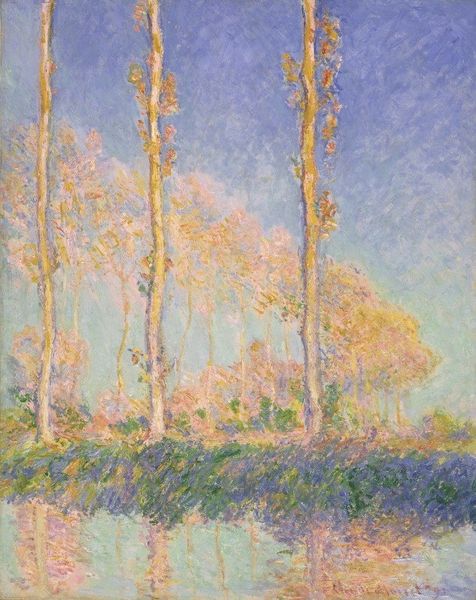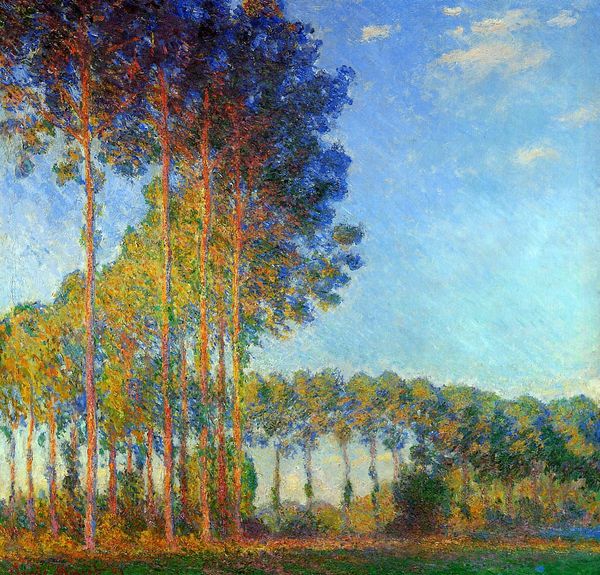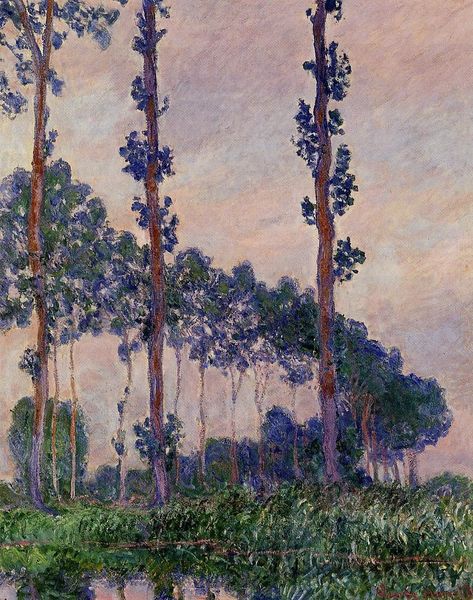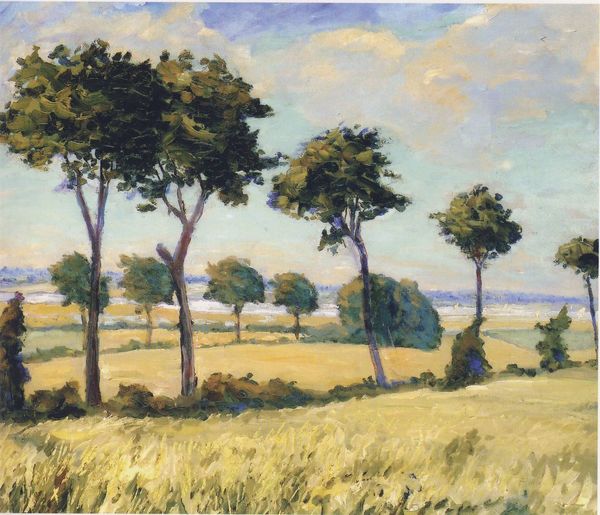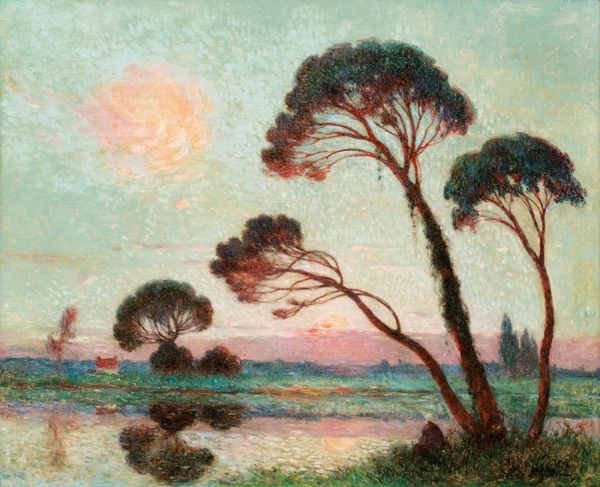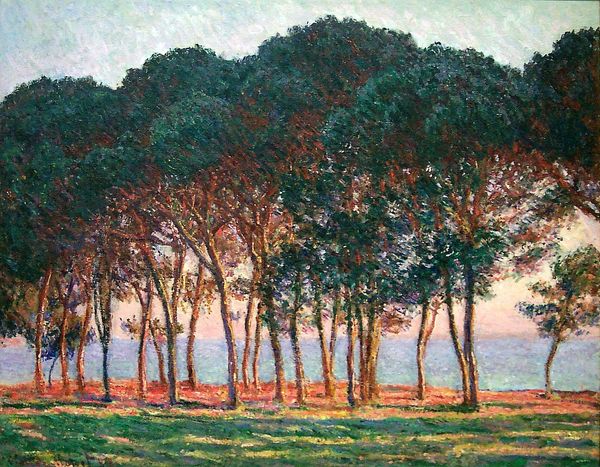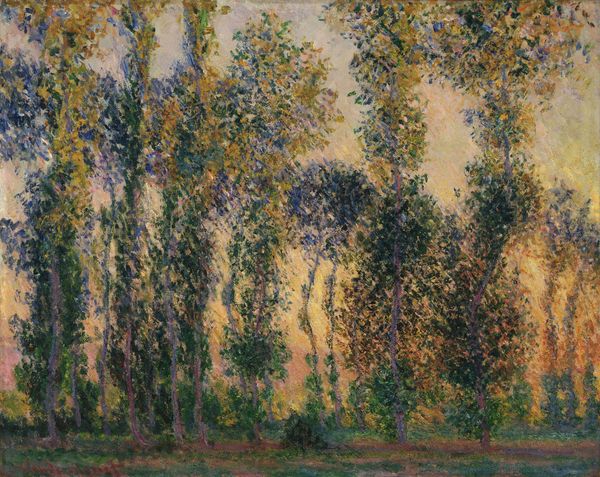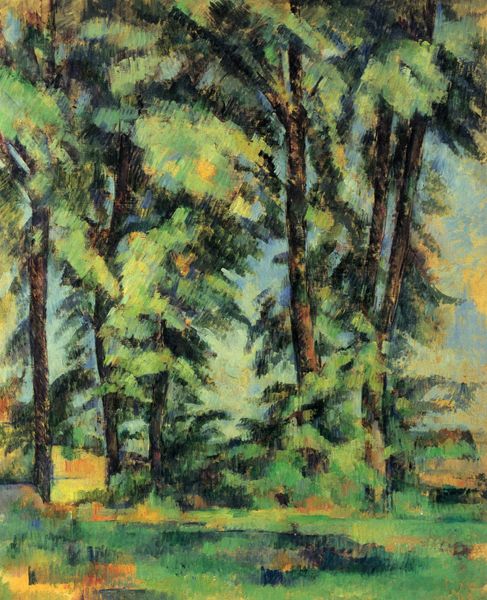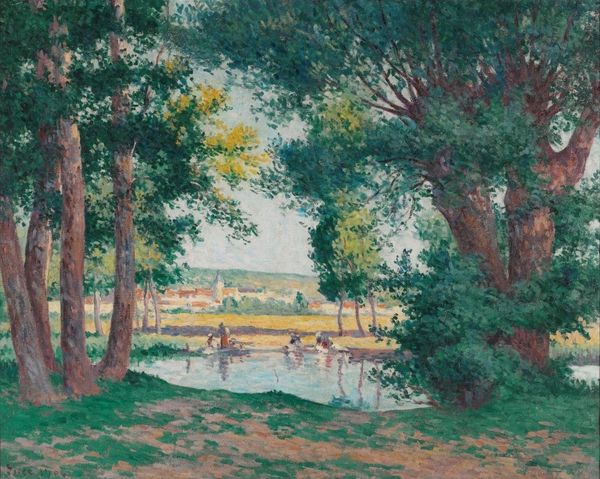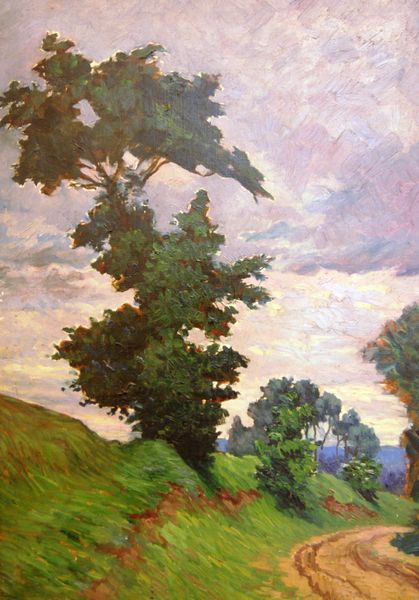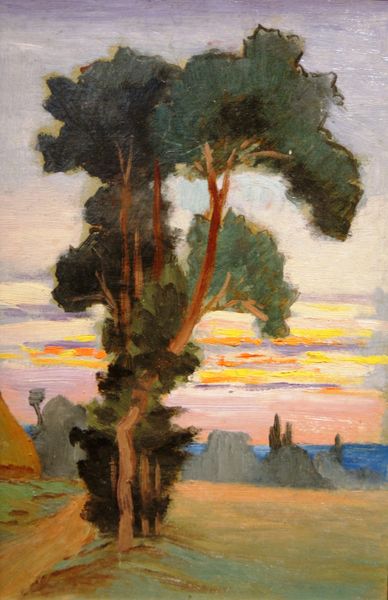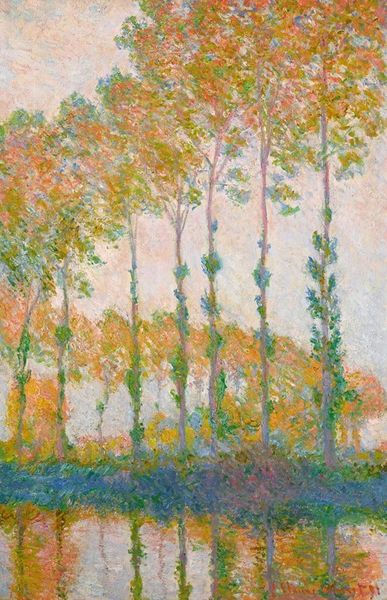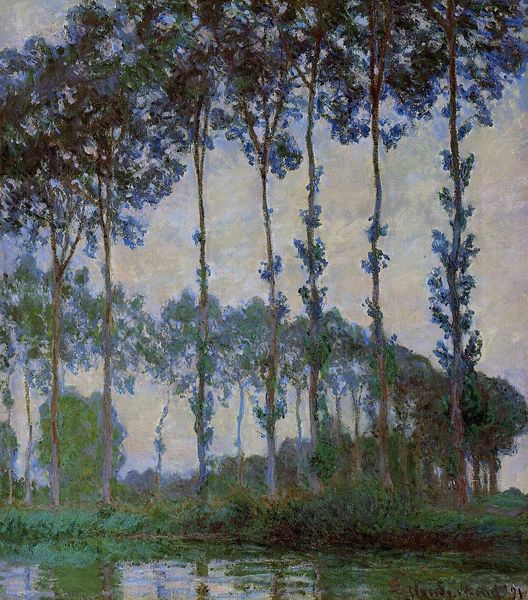
painting, plein-air, oil-paint
#
painting
#
impressionism
#
plein-air
#
oil-paint
#
landscape
#
form
#
line
#
realism
Copyright: Public domain
Curator: Looking at Claude Monet’s "Juan-les-Pins," created in 1888 with oil paints, it strikes me as an excellent study of light and form, particularly how the artist renders a sense of place through visible brushstrokes and careful layering of color. What's your first impression? Editor: Dreamy. It's a total dreamscape! Those pine trees are reaching towards something, almost dancing, and the colors... they’re not quite real, are they? More like a memory. A perfectly hazy, golden memory. Curator: Precisely! The material handling reflects Monet's movement towards capturing ephemeral atmospheric effects, something Impressionism championed. Think about his working methods: painting "en plein air," observing firsthand the subtle shifts in light and shadow and how it impacted what he saw and, therefore, what he painted. The surface, although representational, dissolves into textures and discrete marks of paint that become part of its essence. Editor: Right, because if you get up close, it's all these individual strokes, these dabs and dashes of paint. But then you step back, and suddenly it’s this whole, breathing world. I feel like I can almost smell the pine needles and the sea. What interests me, too, is the structure—these stark verticals of the trees against the shimmering horizontal space. What’s that about? Curator: I think the composition does interesting things, almost trapping the background while offering a means to view it. But note how his choice of canvas and oil paints wasn't just about replicating what he saw, but about the *act* of seeing itself. Monet engages with emerging industrial methods to deliver art from nature and communicate that art back to an industrializing world. The context matters, you see! Editor: Sure, it matters. Still, something is lovely and melancholy about that scene, as if a moment is quickly passing. I'm drawn to the human element *within* those formal constructs: a personal story. Even the most technically focused artistic labor has, at its heart, emotion and interpretation. That, in itself, becomes art. Curator: Well, I guess it all comes down to understanding that paintings aren't simple illusions but records of work and social value, rendered beautiful to the eye. Editor: To that point, "beautiful" has many layers of its own, too! And this artwork's emotional accessibility invites viewers in regardless of what their motivations may be.
Comments
No comments
Be the first to comment and join the conversation on the ultimate creative platform.
